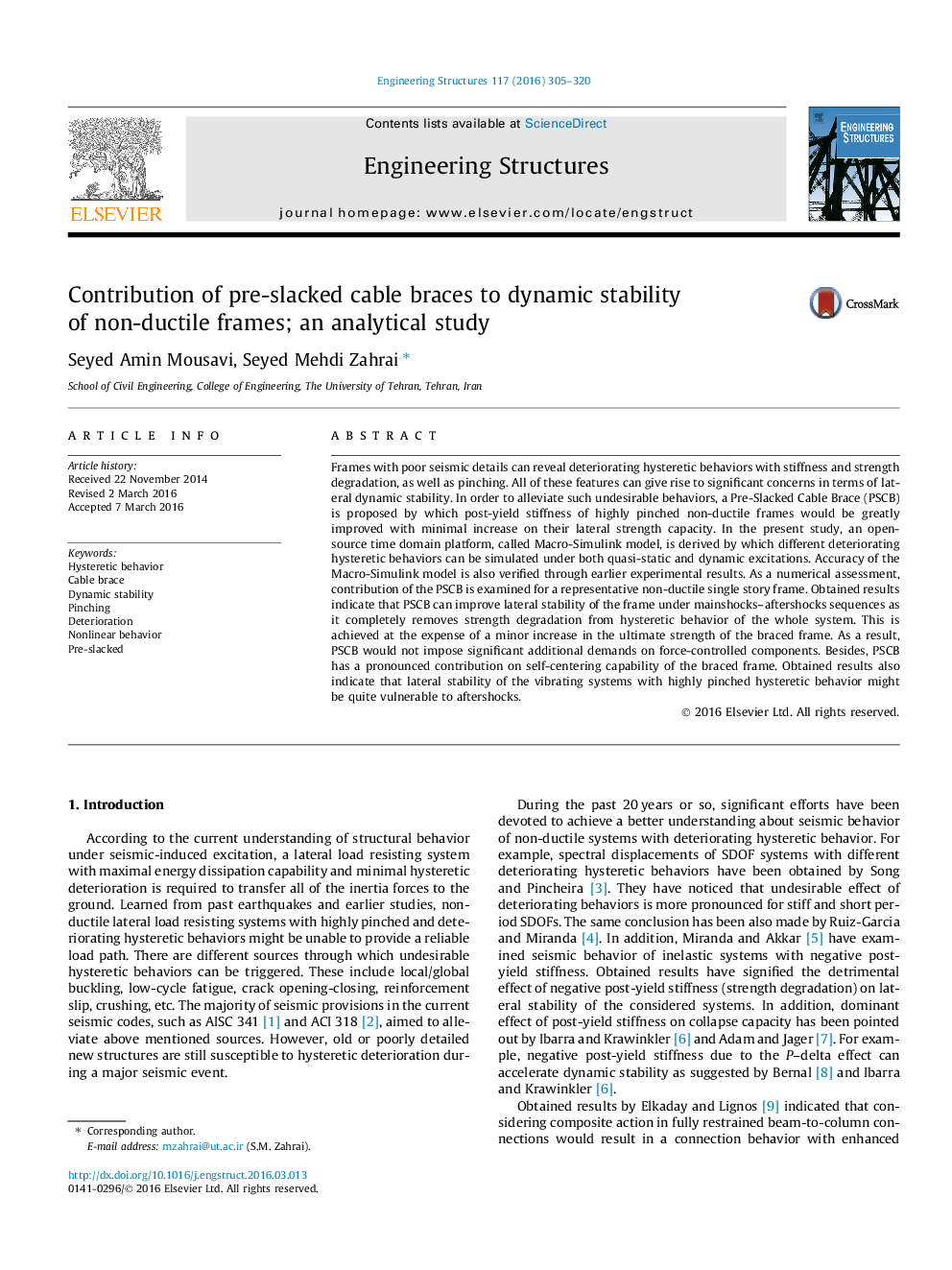| کد مقاله | کد نشریه | سال انتشار | مقاله انگلیسی | نسخه تمام متن |
|---|---|---|---|---|
| 6740003 | 504326 | 2016 | 16 صفحه PDF | دانلود رایگان |
عنوان انگلیسی مقاله ISI
Contribution of pre-slacked cable braces to dynamic stability of non-ductile frames; an analytical study
ترجمه فارسی عنوان
مشارکت کلاسیک های کابل قبل از لغزش به ثبات پویا فریم های غیر مجلسی؛ یک مطالعه تحلیلی
دانلود مقاله + سفارش ترجمه
دانلود مقاله ISI انگلیسی
رایگان برای ایرانیان
کلمات کلیدی
رفتار هیسترتیک، کابل کراوات، پایداری پویا، خرابکاری زوال، رفتار غیرخطی پیش از لغزش،
موضوعات مرتبط
مهندسی و علوم پایه
علوم زمین و سیارات
مهندسی ژئوتکنیک و زمین شناسی مهندسی
چکیده انگلیسی
Frames with poor seismic details can reveal deteriorating hysteretic behaviors with stiffness and strength degradation, as well as pinching. All of these features can give rise to significant concerns in terms of lateral dynamic stability. In order to alleviate such undesirable behaviors, a Pre-Slacked Cable Brace (PSCB) is proposed by which post-yield stiffness of highly pinched non-ductile frames would be greatly improved with minimal increase on their lateral strength capacity. In the present study, an open-source time domain platform, called Macro-Simulink model, is derived by which different deteriorating hysteretic behaviors can be simulated under both quasi-static and dynamic excitations. Accuracy of the Macro-Simulink model is also verified through earlier experimental results. As a numerical assessment, contribution of the PSCB is examined for a representative non-ductile single story frame. Obtained results indicate that PSCB can improve lateral stability of the frame under mainshocks-aftershocks sequences as it completely removes strength degradation from hysteretic behavior of the whole system. This is achieved at the expense of a minor increase in the ultimate strength of the braced frame. As a result, PSCB would not impose significant additional demands on force-controlled components. Besides, PSCB has a pronounced contribution on self-centering capability of the braced frame. Obtained results also indicate that lateral stability of the vibrating systems with highly pinched hysteretic behavior might be quite vulnerable to aftershocks.
ناشر
Database: Elsevier - ScienceDirect (ساینس دایرکت)
Journal: Engineering Structures - Volume 117, 15 June 2016, Pages 305-320
Journal: Engineering Structures - Volume 117, 15 June 2016, Pages 305-320
نویسندگان
Seyed Amin Mousavi, Seyed Mehdi Zahrai,
